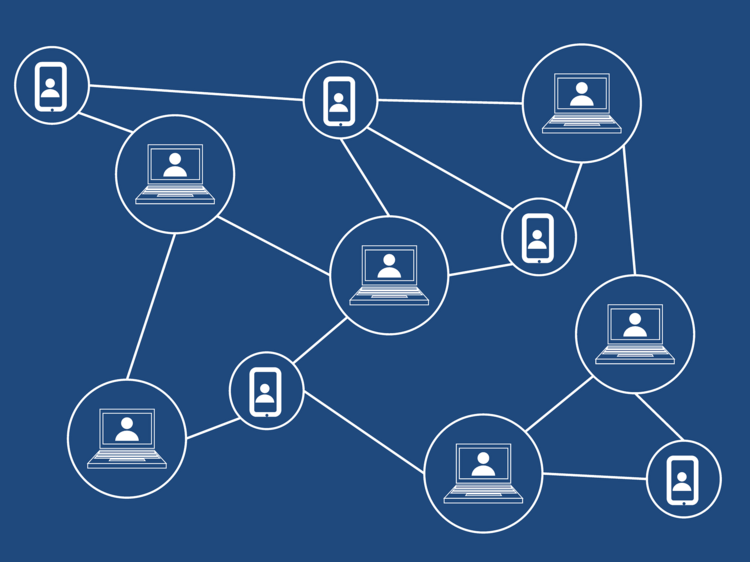Blockchain is no ‘magic wand’ for cyber security

The decentralised nature of blockchain networks may deter some cyber crooks, but ASEAN organisations still need to pay heed to the security of their blockchain infrastructure.
The unprecedented distributed denial of service (DDoS) attack that disrupted the internet in October 2016 was a stark reminder of the sorry state of cyber security.
At that time, the Dyn Domain Name System (DNS) being used by a majority of websites to provide access to online services was hit with massive volumes of internet traffic unleashed by as many as 100,000 compromised devices in the Mirai botnet.
Although DNS is a decentralised system with servers around the world, its distributed components operate in reference to a central authority. Some cyber security experts have suggested that operating DNS on a blockchain would fully decentralise the system, preventing attacks aimed at a single, centralised source, and avoiding the flood of traffic that ultimately crashes websites.
“It also means that a hacker would have to gain access to multiple nodes in the system at the same time in order to implement the attack,” said Eugene Aseev, vice-president of engineering at Acronis. “That is much harder, more expensive and more time-consuming to carry out.”
Indeed, the decentralised nature of blockchain has been part of the technology’s appeal. As an open network that encrypts data and transactions on a distributed ledger, it makes all information publicly available. All participants in a blockchain network may verify the data, ensuring the information cannot be forged or removed.
In fact, blockchain has the potential to increase trust between parties as well as the accuracy of information. Examples include parties along a supply chain or government departments agreeing on the validation of records. If a copy of one’s driving licence is distributed across trusted organisations in the ASEAN region, there would be many entities vouching for the integrity of that piece of identity.
“All actions are accurately recorded into blocks which are interconnected to previous blocks,” said Sherif El Nabawi, security advocate at Symantec Asia-Pacific and Japan. “This means that the data is replicated in every subsequent block, enabling the system to compare the new block with the whole chain. If a block contradicts the other blocks, it will be recognised as false and will alert the entire system.”
In addition, because all transactions are time-stamped and given a digital signature, any participant can trace the chain of actions back to a particular time period, finding the location of a party that initiated the transactions.
“Every action initiated on a blockchain is cryptographically linked to a user, who performs it,” said Nabawi. “This structure makes it harder for hackers to exploit the network, complementing cyber security efforts and contributing to the reliability and sustainability of the entire cyber defence system.”
A recent IDC study suggests that worldwide spending on blockchain could reach $11.7bn by 2022 – the technology is clearly going through a hype cycle. There is no shortage of bold claims for what blockchain can do, but they often seem to be oversold.
“When people talk about blockchain use cases, they typically refer to data storage or exchange that is not streamlined or well-addressed by having a single or centralised database,” said Bruce Davie, vice-president and chief technology officer at VMware Asia-Pacific and Japan. “By having the database distributed among several actors, it may offer a better solution.”
In cyber security, high-potential use cases include identity management, data stores and smart contracts underpinned by a permissioned blockchain, by which known, authorised entities (agents or nodes) are invited to participate – unlike the permissionless blockchains used by most cryptocurrencies.
Although the immutability of the blockchain ledger makes it very hard to rewrite history by preventing anyone from tampering with data and information, it is arguably only a small part of the overall cyber security puzzle.
No Magic Wand
There are two things that make a blockchain theoretically tamperproof – a cryptographic fingerprint unique to each block, and a consensus protocol where the nodes in the network agree on a shared history.
But there are ways to subvert a blockchain, and there have been cases where flaws in code have been exploited to steal large sums of money.
An example of this is the DAO (decentralised autonomous organisation) attack that led to the theft of $50m worth of cryptocurrency Ether. “Bugs in smart contract code cannot necessarily be easily prevented, much like other software,” said VMware’s Davie. “There is a need to make the contract layer more resilient.”
Individual blockchain nodes can also be compromised. In blockchain environments, just because one bad node cannot bring down the whole system does not mean you should not care about the security of that node.
Davie added: “Various forms of human error, including reusing passwords, falling victim to social engineering, and failure to operate with best practices such as patching known security vulnerabilities, continue to be the major issues for security – and these aren’t immediately solved by blockchain.”
It is therefore important for organisations to pay attention to the security of blockchain infrastructure by doing all the basics, such as applying micro-segmentation, automated patch management, native data-at-rest encryption, and monitoring for changes to an application’s intended state and behaviour.
